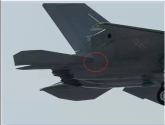Discussion moved here to avoid derailing initial thread.
Seen not exactly on Liaoning, but in the PLAN NAU. Though it is certainly reasonable to expect that the post-MLU Liaoning will have similar modifications.
For reference:
I am aware, however I don't believe the modifications have actually been done. See here




